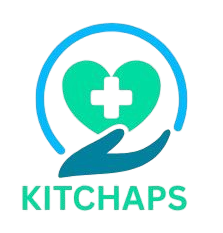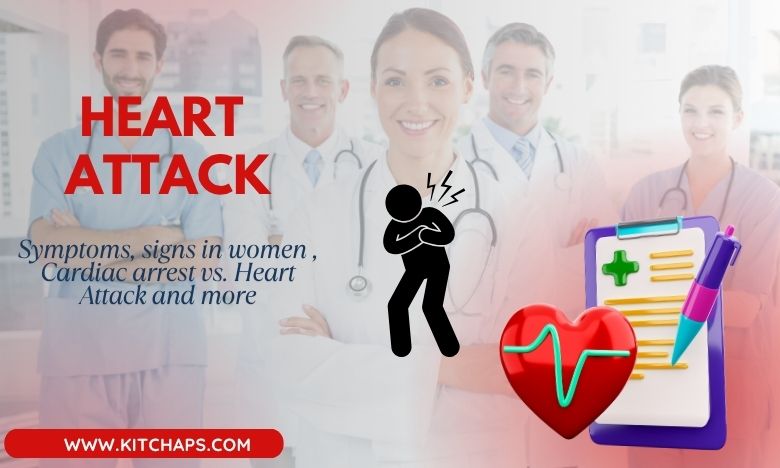“Myocardial infarction” is another name of heart attack in medical language. This is a medical emergency that anyone can face immediately. It can change a human’s life in a second. Some people heal quickly, others may take time. Most people experience anxiety, depression, or an enormous fear of another myocardial infarction after experiencing one. In this blog, we will talk about what a heart attack is, its signs and symptoms, causes, cardiac arrest vs heart attack, diagnosis, and prevention.
What is a Heart Attack?
A heart attack arises when the supply of blood is stopped to the heart muscles, mainly by a blood clot. Muscle cells start to die if blood flow isn’t promptly restored, since this blockage keeps oxygen-rich blood from getting to that part of the heart. Although the heart is a muscle that continuously circulates blood throughout the body, it requires oxygen-rich blood from the coronary arteries.
Causes of Heart Attack
Most of the attacks are caused by CAD (Coronary Artery Disease), which is the consequence of atherosclerosis- the growth of plaque that is present inside the arteries. This happens over many years and is affected by various reasons:
- Increase in Blood Pressure (BP): Puts additional pressure on the artery and heart.
- Excessive Cholesterol: Leads the way to more plaque.
- Tension and Unhealthy Diet: This leads to high BP and excessive fat.
- Diabetes: It leads to a heart attack.
- Gender and Age: Men have a higher risk of heart attack than women, and the age of the person also increases the risk of heart attack.
- Smoking: Smoking is a threat to our blood vessels and increases the formation of plaque.
- Family History: Close family members having heart disease increase the risk of a myocardial infarction.
Heart Attack Symptoms
It’s really important to know the symptoms of a myocardial infarction. The typical signs of a heart attack include:
- Dizziness: Sometimes you may feel faint.
- Pain extending to other body parts: The pain can move from the left arm, can also both arms. It also affect other areas like neck, jaw, back etc.
- Anxiety: An instant feeling of panic is also a sign of a myocardial infarction.
- Pain in Chest: Feeling of pressure, aching in the heart area, feels like heartburn.
- Breathing Shortness: You feel a shortage of breathing without pain in the chest.
- Feeling of Nausea: Sometimes people experience cold sweat, nausea, and vomiting.
Heart Attack Symptoms in Women
Heart Attack signs in women are different from compared in men. Women experience different symptoms that are mistaken for serious conditions. There are some key symptoms in women that have been found by many researchers.
Women feel less pressure on the chest or a feeling of tightness than men report, says. In women, feelings of Nausea or vomiting can be taken as a mistake for indigestion or flu. Women feel cold sweats, if it is not related to exercise.
The feeling of dizziness and fatigue has been found in women as they feel faint and extremely tired before some days of it. There will be sleep disturbances and feelings of anxiety as women may have problems sleeping, and it can be a warning sign. Sometimes, pain in the neck, shoulder, back, etc., these pains occur frequently and cannot be attributed to the heart.
Women tend to minimize or disregard their symptoms, frequently attributing them to stress, anxiety, or less severe conditions. As they may put off getting care, women are more likely than men to die from heart attacks.
Heart Attack vs. Cardiac Arrest
Sometimes people may get confused between a heart attack and cardiac arrest. They are not the same thing. Here is the table explaining the difference between a Heart Attack and Cardiac Arrest.
| Content | Heart Attack | Cardiac Arrest |
| Definition | An obstacle in the coronary artery stops blood flow to the heart muscle. | The heartbeat suddenly stops in Cardiac Arrest. |
| Symptoms | Chest Pain, Shortness of breathing, sweating, vomiting, and pain in other body areas. | Sudden fainting, unconsciousness, pulse stop, and no breathing. |
| What Happens | The heart still beats, but the muscle part is at risk if blood flow is not restored. | The heart does not pump blood, and a person will die in a few minutes if not treated as soon as possible. |
Diagnosis of Heart Attack
Doctors use various techniques to diagnose a Myocardial Infarction:
- ECG (Electrocardiogram): This show the activity of the heart and show if a heart attack has happened.
- Imaging Test: Doctors use chest x-rays, echocardiograms to get a clear image of the heart.
- Blood Test: Some proteins are released into the blood when the heart muscles are stressed.
- Physical Exam and Medical History: The doctor will ask you about the symptoms and various risks.
Prevention: Protect Your Heart
These are the steps you can take to protect your heart, as not all myocardial infarction can be prevented:
- Quit smoking as it is the biggest factor for heart disease.
- Excessive consumption of alcohol can raise your BP, and this can lead to a sudden heart attack.
- You can find healthy ways to maintain your mental health so that your stress can be reduced. You can go for meditation, yoga, and exercise.
- Eat a healthy diet that is full of green vegetables, healthy fruits, grains, and many more to make your heart healthy.
- Supervise your cholesterol and BP as prescribed by your doctor.
- Keep your blood sugar levels under control.
- Schedule annual visits to the doctor for check-ups.
Conclusion
A heart attack is a heart condition that occurs suddenly but with correct treatments and prevention it can be treated. Being aware of the warning symptoms, particularly the less evident ones, acting promptly, and adopting preventative measures to avoid heart disease can make all the difference.
Disclaimer
The content above is provided here, all authentic, and all the information is taken from the internet. The information provided here is only for informational purposes. The content on this website is not deliberately to be a substitute for professional advice, diagnosis, or treatment.
Read more about:
Exercise and Lifestyle for Better Heart Health: Full Guide

